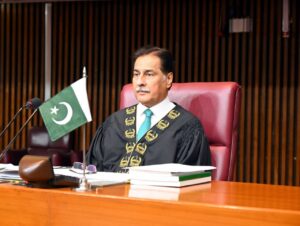Gurbanguly Berdimuhamedov Delivers Welcoming Speech at Opening of New Mosque in Anau

The National Leader of the Turkmen people and Chairman of the Khalk Maslakhaty, Gurbanguly Berdimuhamedov, delivered a poignant welcoming speech to mark the inauguration of a new mosque in the city of Anau, as reported by Turkmen media. In his address, Berdimuhamedov expressed heartfelt appreciation for the auspicious occasion, underscoring the significance of the newly opened mosque as a symbol of spiritual unity and communal harmony. The ceremony, attended by dignitaries and members of the local community, exemplified the enduring commitment of the Turkmen people to the values of peace, tolerance, and religious diversity. Berdimuhamedov’s speech resonated with themes of solidarity and reverence, highlighting the mosque’s role as a sacred space for prayer, reflection, and communal gatherings.
As the nation embraces this momentous occasion, Berdimuhamedov’s words serve as a reminder of Turkmenistan’s unwavering dedication to fostering a climate of religious tolerance and reverence for cultural heritage.
Hello, dear friends!
Dear compatriots!
Guests of honor!
We are in the new mosque of the city of Anau, where sadaka-agzachar takes place on the blessed days of the holy month of Oraza.
Building roads, bridges and mosques is considered a good deed among the Turkmens. And today we are in a modern religious building, the construction of which began in the first days of Arkadaghly Serdar’s accession to the post of head of state. As Magtymguly Fragi wrote: “Remezan diýerler aýyň ýagşysyn.” Therefore, it is very symbolic that the opening of the new mosque took place during the month of Oraza this year, marked by celebrations on the occasion of the 300th anniversary of the poet and thinker. The event itself demonstrates the continuity of the traditions of our wise ancestors – doing good deeds on blessed days and honoring shrines.
The city of Anau has been attracting the attention of the world scientific community for many centuries. It has been declared the cultural capital of the Turkic world in 2024, and on the occasion of this glorious event, a launch ceremony of thematic events is organized. Numerous guests arrived to take part in it. And the opening in these eventful days of a new modern mosque on the sacred land of Anau, combining in its appearance both ancient traditions and modern trends in architecture, clearly demonstrates commitment to sacred responsibilities.
The total area of the religious building is 6 hectares, and 500 people can pray here at the same time. The height of each of the four minarets is 50 meters, the dome is 30 meters, which symbolizes the length of the month by day, and the 24 windows located at the base of the dome – the length of the day.
The lamps installed in the mosque and sadaqah room for 500 people are made in the shape of ears of wheat, as are the patterns under the dome and on the walls of the structure. This indicates that Anau is the birthplace of wheat “ak bugdaý” and the birthplace of agricultural culture. As for the color scheme of the ornaments inside the mosque and the premises adjacent to it, it is identical to the colors of the images on the Seyit Dzhemaletdin mosque. On the walls of the new mosque there are octagrams – the symbol of the ancestor Oguzkhan, and in the upper part of its mihrab there is a large illuminated green inscription in Arabic “Alla”. The symbolism of the times of Oguzkhan also served as a prototype for the ornaments on the carpets in the mosque and the room for sadaka.
Dear friends!
Turkmens are a people who protect and preserve their national traditions and customs, cultural values, an integral part of which is the Islamic religion. Her role is significant in education in the spirit of honesty, humanism and nobility; she encourages people to be virtuous.
Dear friends!
In the coming days, on the occasion of Gadyr Gidjesi, the holy month of Oraza, similar new mosques will open in the regions of the country where prayers will be offered. The state also provides great support to those who intend to perform the Hajj. Every year, thousands of our compatriots go on pilgrimage to holy places, and also fast, give sadaka-agzachar and read prayers during the month of Oraza. In Turkmenistan, the sacred holidays of Oraza and Kurban Bayram are celebrated at the state level.
Dear compatriots!
May Almighty Allah fulfill your good thoughts and intentions and help you in good deeds in the interests of the state and society!
Dear friends!
Now, over a cup of tea, let’s discuss a number of important issues. As I already said, in ancient times Anau was considered a prosperous region. Nowadays, this sacred land, where agricultural culture first arose, is flourishing again.
The ruins of the structure, popularly called the Seyit Dzhemaletdin Mosque, are known to be located in the south of Anau. The inscription on the portal of the mosque indicated the name of the ruler of Khorasan (1446–1457) – Sultan Abul-Qasim Babur and read: “This construction happened during the reign of the great Sultan, the ruler of his people, the refuge of the countries and the century of Abul-Qasim Babur Bahadur Khan “May the Almighty perpetuate his power and his kingdom.” Other inscriptions provided information that the “House of Beauty” was built at his own expense by the vizier of the ruler of Khorasan, Muhammad, in 1455–1456 in memory of his father Dzhemal-ad-dunya-va-d-din.
Historians confirm that Seyit Dzhemaletdin was an outstanding Islamic scholar and theologian, for which he was awarded the title “adornment of the world and religion.”
Among the people there are various legends about the Anau mosque, built of magnificent baked bricks. This building, which had excellent polychrome ceramic decoration, overlooked a spacious front courtyard. The square hall with a span of 10.5 meters was covered with a dome. In the thickness of the southern wall of the hall there was a mihrab decorated with tiles. On either side of it there were narrow niches with exits to the outside.
The decoration of the mosque had the greatest value and artistic originality: above the arch there are magnificent images of two writhing dragons, whose heads are facing each other. The image of dragons on the facade has no analogue in the decoration of architectural monuments of Central Asia, which is noted by both historians and ethnographers. There is also a legend about those same dragons:
Once upon a time, during the reign of a fair and wise queen, people heard a loud and alarming ringing of a bell. Gathering at the gate, they saw that the bell was being shaken by a huge dragon. At the same time, he seemed to be pointing towards the mountains, then at two craftsmen with axes and saws standing in the crowd. The queen ordered the craftsmen to follow the dragon, which began to retreat into the mountains. There they saw another dragon, who was experiencing terrible torment: he swallowed a mountain goat, whose horns were stuck in his throat. Brave craftsmen entered the open mouth, sawed through the horns and chopped the goat’s carcass into pieces, freeing the dragon from torment. Then the first dragon led the craftsmen to a cave full of treasures and allowed them to collect as much as they could carry. The next day, the residents were awakened again by the ringing of the bell. When they came out, they saw both dragons, who brought gold and many precious stones. Having laid all this at the feet of the queen, they retired to the mountains. She ordered to build a large mosque with these jewels and depict donors – dragons – on its portal.
According to legend, dragons were the patrons of the inhabitants of Anau.
Dear friends!
My book “Turkmenistan – the heart of the Great Silk Road” emphasizes that the Seyit Dzhemaletdin Mosque was destroyed by the Ashgabat earthquake in 1948. Under the ruins, there were also fragments of decor that had lain underground for more than half a century. Only during the years of independence did domestic specialists manage to retrieve from the ruins and piece by piece restore fragments of the magnificent work of fine art created by our ancestors. Today, the restored decorative elements of the Seyit Dzhemaletdin Mosque are exhibited at the Museum of Fine Arts of Turkmenistan.
Scientific analysis of the images on the Seyit Dzhemaletdin Mosque in Anau confirms that they have similarities with Chinese fine art. A number of scientists suggest that this similarity indicates the existence of active contacts between Turkmen and Chinese masters in the Middle Ages. Of course, then this process was facilitated by the Great Silk Road, through which craftsmen reached China, and Chinese came to our sunny land to visit glorious cities on Turkmen soil and exchange experiences.
Dear friends!
Looking back into the past, we can say that the Turkmen-Chinese ties of friendship and brotherhood are rooted in the depths of history. In 49 BC, the ancestors of the Turkmens signed an agreement with the people of China, called the “Oath Treaty”. Such an agreement testified to the closeness of the two peoples. It stated: “Let our sons and grandsons be faithful to this treaty from generation to generation.”
Dear friends!
I would also like to note that the ancient city of Anau was declared the cultural capital of the Turkic world in 2024 for a reason: according to the eastern calendar, this year is considered the year of the Fish for us, and for the Chinese people it is the year of the Dragon, images of which were located on the portal of the Seyit Dzhemaletdin mosque.
The examples I have given are covered in detail in the recently published book by Hero Serdar “Änew – müňýyllyklardan gözbaş alýan medeniýet”.
In short, the fact that this year is considered the year of the Pisces in our country, and the year of the Dragon among the friendly people of China, is of great importance in the context of the increased attention of the world community to the ancient city of Anau. At the same time, this demonstrates that our people have maintained close cooperation, especially cultural ties, with the people of China, as well as with other peoples of the planet, since time immemorial.
Dear friends!
The Seyit Dzhemaletdin Mosque, being one of such historical and cultural values of universal human scale, is considered inviolable. Since the values next to the mosque are under protection, major reconstruction is impossible, and this is very important in terms of preserving it in its original form for future generations.
Dear compatriots!
If you approve, as a sign of respect for the ancestors and the heritage of the past, as well as respect for the personality of those who left a bright mark on history, we will call the new religious building erected on this sacred land “Seyit Dzhemaletdin Mosque.”
Dear friends!
Today in the new mosque we participated in sadaqa-agzachar, offered prayers and read verses in the holy month of Oraza. May the Almighty accept our prayers!
Dear compatriots!
Let the new mosque of Seyit Dzhemaletdin serve our people in good endeavors!” said National Leader of the Turkmen people Gurbanguly Berdimuhamedov.


